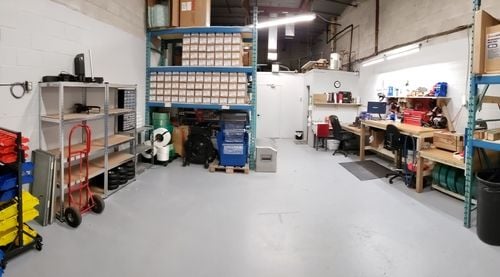“An ounce of prevention is worth a pound of cure,” or so the saying goes. Almost anyone who uses machines or power tools will tell you there’s a lot of truth to this.
A top question about strapping equipment is how often maintenance must be performed to keep the tools in peak working condition. Maintenance schedules vary based on the tool, as well as the maintenance procedure in question. Some tasks should be done after every use, while others are performed less frequently.
This quick guide covers a standard maintenance schedule for the new S-series tool. Following these guidelines will help you keep your strapping equipment operating longer.
Determining the Maintenance Schedule
There are a few ways to determine a maintenance schedule for your strapping equipment. You can operate on a time-based schedule, or you might want to go by the number of cycles the tool has performed.
For a tool being used on one shift, it’s recommended that you perform maintenance at least once annually. If you give the day shift a new tool in December, the tool should most definitely come in for maintenance the following December.
If the tool is being handled by employees on multiple shifts, you’ll need to run maintenance sooner. In this scenario, because of the increased use, the tool should likely be serviced every four months or so.
Most tools should be sent in for maintenance after a certain number of cycles. For the S-series tool, you can perform 80,000 cycles before the tool requires maintenance. Depending on how much you use the tool, this could mean the tool needs maintenance every few months. Even if you don’t hit the threshold within a year, it’s still wise to schedule maintenance.
Daily Maintenance Tasks
There are some preventative maintenance tasks that should be performed daily or every time the tool is used. Taking care of these tasks reduces the chances of a small problem turning into a big one.
Daily tasks include visually inspecting the tool for damage, debris, or loose parts prior to use. The tool should also be cleaned any time it’s used, to remove debris and dirt that could cause damage.
You should examine the battery and LED screen display for function. Check seal quality, tension adjustment, the strap feed, and other functions as well.
Part Replacement at 80,000 Cycles
Even the best daily routine won’t prevent wear and tear on your strapping equipment. That’s why there are certain tasks you’ll need to perform at 80,000 cycles.
Two bearings along the motor shaft should be replaced at this point. This prevents damage to the motor shaft itself.
The grippers, tension wheel, cutter, and welding stop gripper also need to be replaced after 80,000 cycles. Wear and tear on these parts reduces the functionality of the tool and could make it less effective and safe to use.
After every scheduled maintenance, new security clips should also be added.
Train Your Team
A large part of proper maintenance is training your team to carry out maintenance tasks correctly. Take, for example, cleaning the new S-Series tool. Abrasive instruments like screwdrivers and wire brushes should never be used to clean the tool since they might cause damage. Instead, your team should use compressed air.
Without proper training, your team members might take the wrong cleaning devices to your strapping equipment. That could shorten the tools’ life span or run up another maintenance bill.
Your team can complete many of the routine maintenance tasks as they feel comfortable. For more complex procedures, like parts replacement, a qualified service technician should be called.
Give Your Tools a New Lease on Life
Preventative maintenance can go a long way to keeping your strapping equipment in good working order. If you’ve just added new tools to your fleet, now’s the time to start taking care of them, so they can keep serving you longer.

